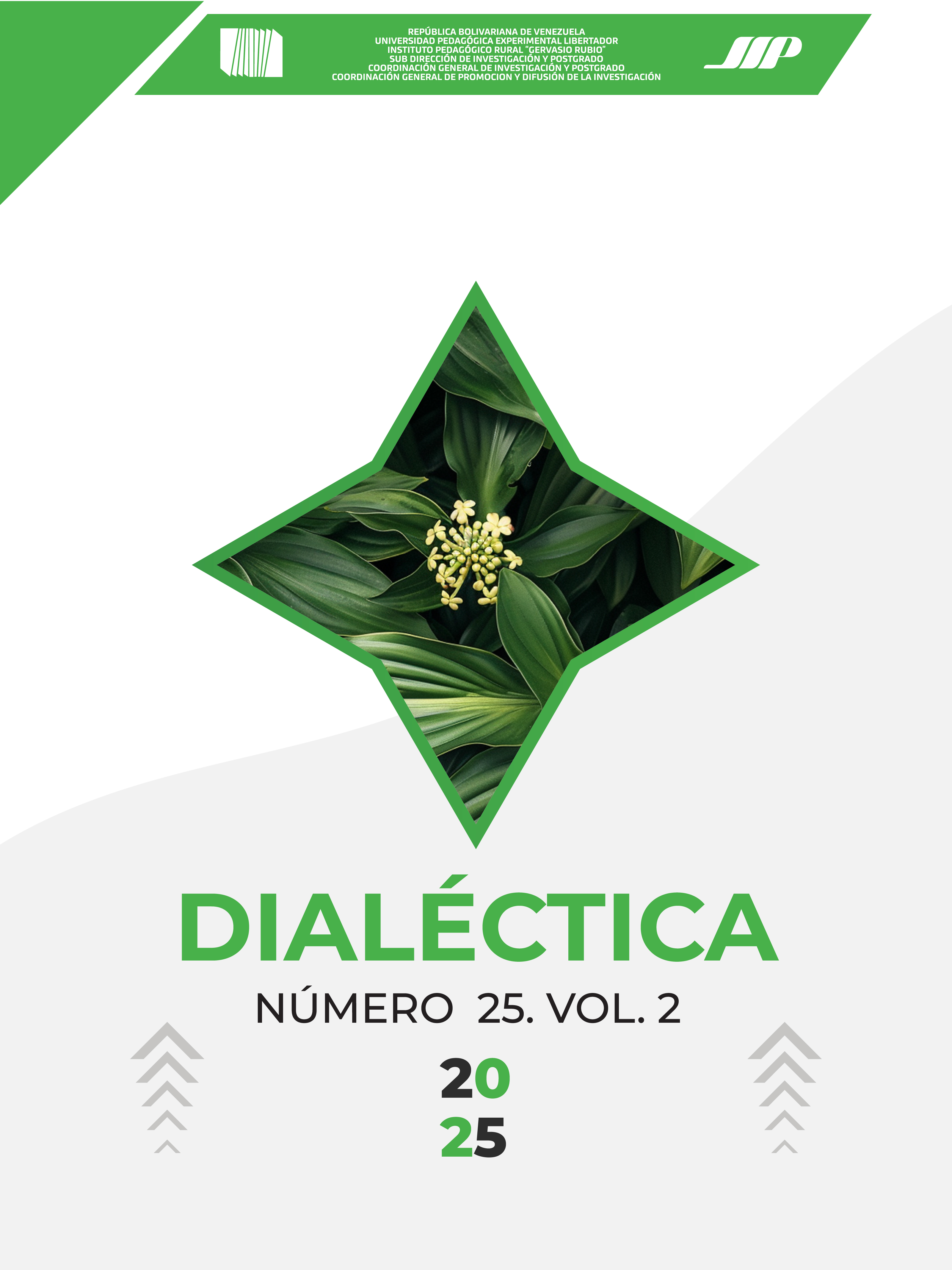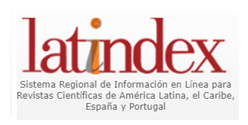DIDACTICS OF THE TEACHING OF READING AND WRITING IN COLOMBIAN SECONDARY EDUCATION
DOI:
https://doi.org/10.56219/dialctica.v2i25.4021Keywords:
didactics, teaching, reading, writing, training processAbstract
Education in recent times has faced relevant changes in all senses; in fact, we must reflect on one of the components of high impact such as reading and writing, which is the form of communication that human beings use continuously and often do not value its importance, although the process of writing becomes the fundamental basis for learning of all human beings, we must emphasize the importance of the teacher's support in the classroom battling the difficulties to give the student the necessary tools for their good educational development. Thus, the purpose of the present theoretical approach emerges, which is to reflect on the incidences derived from the didactics of teaching reading and writing in Colombian basic secondary education. The methodology used is involved in a documentary analysis with a north defined in an academic essay; which led to a result focused on the promotion of the teaching of reading and writing; aspects that lead to the conclusion that the process of academic and personal formation is strengthened from reading and writing, which are essential elements in the formation of the students.
Downloads
References
Acosta, D. (2023). Más allá de las palabras: inteligencia artificial en la escritura académica. Escritura Creativa, 4(2), 36-58. https://ojs.nfshost.com/index.php/escritura_creativa/article/view/44
Aldana, Y. (2018). Integración lingüística en la enseñanza del inglés en Colombia mediante el aprendizaje basado en proyectos. Revista Chakiñan de Ciencias Sociales y Humanidades, (5). http://scielo.senescyt.gob.ec/scielo.php?script=sci_arttext&pid=S2550-67222018000100133
Alvarado, J. (2016). Estrategias Didácticas y aprendizaje de las Ciencias Sociales. Revista Científica de FAREM-Estelí, (17). https://camjol.info/index.php/FAREM/article/view/2615 DOI: https://doi.org/10.5377/farem.v0i17.2615
Álvarez, M. (2009). Escritura creativa: Aplicación de las técnicas de Gianni Rodari. Educere, 13(44), 83-87. http://ve.scielo.org/scielo.php?script=sci_arttext&pid=S1316-49102009000100010&lng=es&tlng=es
Blas G., J. (2015, 13 de agosto). Slow learning: Aprender necesita tiempo. jblasgarcia.com. https://www.jblasgarcia.com/2015/08/slow-learning-aprender-necesita-tiempo.html
Catalán, M., & Aires, M. (1999). Para un estudio de las aportaciones de Mijaíl Bajtín a la teoría sociocultural una aproximación educativa. Revista de educación, 320. https://www.academia.edu/download/82517177/re3201107982.pdf
Delmastro, A. (2008). El andamiaje docente en el desarrollo de la lectura y la escritura en lengua extranjera. Paradigma, 29(1). http://ve.scielo.org/scielo.php?script=sci_arttext&pid=S1011-22512008000100011&lng=es&tlng=es
Estrada, V., Villalobos, A., Kirkby, C., Quesda, J., & García, L. (2008). Los modelos pedagógicos centrados en el estudiante: apuntes sobre los procesos de aprendizaje y enseñanza. https://www.researchgate.net/publication/305220235_LOS_MODELOS_PEDAGOGICOS_CENTRADOS_EN_EL_ESTUDIANTE_APUNTES_SOBRE_LOS_PROCESOS_DE_APRENDIZAJE_Y_ENSENANZA
Freire, P., & Faúndez, A. (1986). Hacia una pedagogía de la pregunta. Conversaciones con Antonio Faundez. Buenos Aires: Ediciones La Aurora. https://www.academia.edu/download/36494719/paulo_freire_-_pedagogia_de_la_pregunta.pdf
Galíndez, A. (2022). Estrategia didáctica apoyada en la gamificación para fomento de la lectura y escritura en estudiantes del grado quinto. https://repository.unab.edu.co/bitstream/handle/20.500.12749/17604/2022_Tesis_Arely_Galindez_Jimenez.pdf?sequence=1
Giraldo, L. A., Agudelo, M. C. O., & Gómez, J. M. (2016). Aportes de la teoría ecológica a la construcción de la neuropsicopedagogía infantil. Revista Fundación Universitaria Luis Amigó (histórico), 3(2), 222-230. https://revistas.ucatolicaluisamigo.edu.co/index.php/RFunlam/article/view/2170 DOI: https://doi.org/10.21501/23823410.2170
Lara, A. (2015). Teorías afectivas vintage: Apuntes sobre Deleuze, Bergson y Whitehead. Cinta de moebio, (52). https://www.scielo.cl/scielo.php?pid=S0717-554X2015000100002&script=sci_arttext DOI: https://doi.org/10.4067/S0717-554X2015000100002
Rodríguez Palmero, M. L., Marrero Acosta, J., & Moreira, M. A. (2001). La Teoría de los Modelos Mentales de Johnson-Laird y sus principios: una aplicación con modelos mentales de célula en estudiantes del Curso de Orientación Universitaria. Investigações em ensino de ciências. Porto Alegre. Vol. 6, n. 3. https://lume.ufrgs.br/handle/10183/141225
Rueda, I. (2017). Análisis sistemático del estado actual en los niveles de transformación en los procesos de comunicación digital y los contenidos interactivos. https://repository.ucc.edu.co/entities/publication/357daa94-f19f-4c64-82ff-1ba891719d5e
Zuleta, O. (2005). Una contribución para el aprendizaje Educere, vol. 9, núm. 28. https://www.redalyc.org/pdf/356/35602822.pdf
Downloads
Published
How to Cite
Issue
Section
License

This work is licensed under a Creative Commons Attribution-NonCommercial-ShareAlike 4.0 International License.
La revista Dialéctica conserva los derechos patrimoniales (copyright) de las obras publicadas, que favorece y permite la reutilización de los mismos bajo la licencia Creative Commons Atribución-NoComercial-CompartirIgual 4.0 , por lo cual se pueden copiar, usar, difundir, transmitir y exponer públicamente, siempre que se cite la autoría y fuente original de su publicación (revista, editorial, URL y DOI de la obra), no se usen para fines comerciales u onerosos y se mencione la existencia y especificaciones de esta licencia de uso. Si remezcla, transforma o crea a partir del material, debe distribuir su contribución bajo la misma licencia del original.











